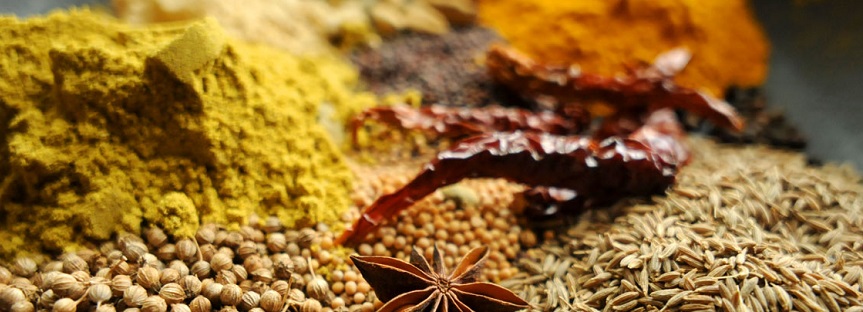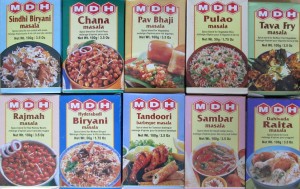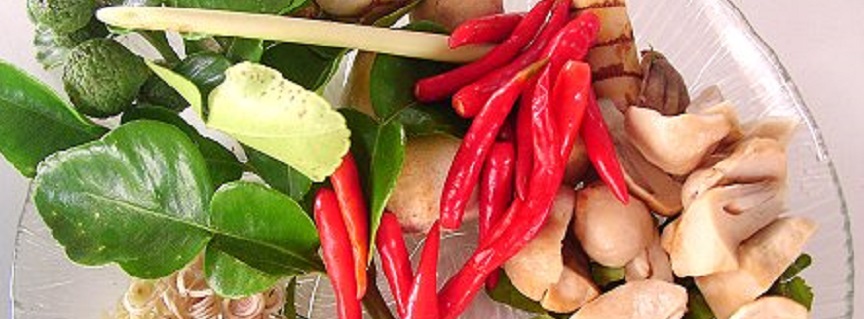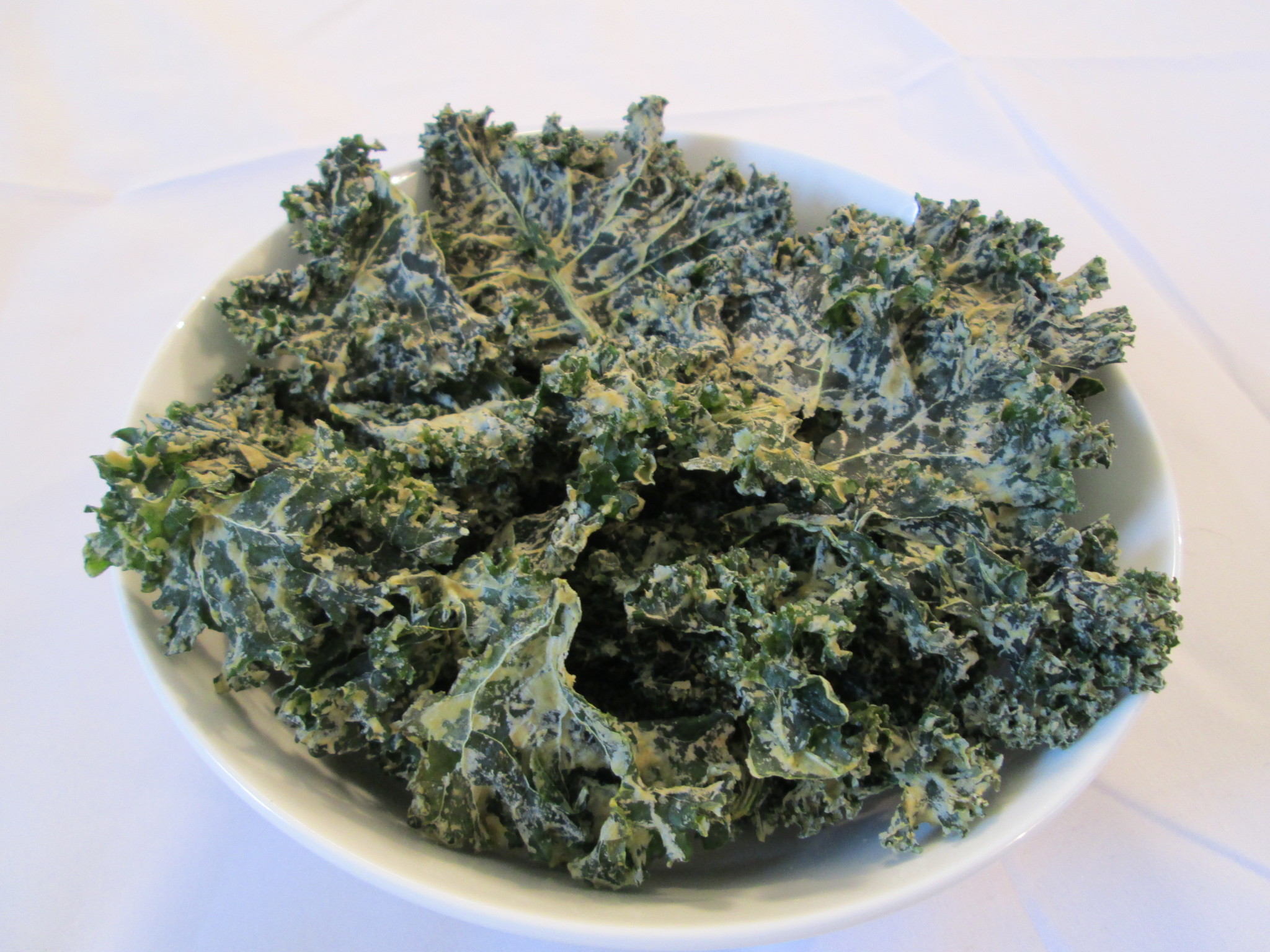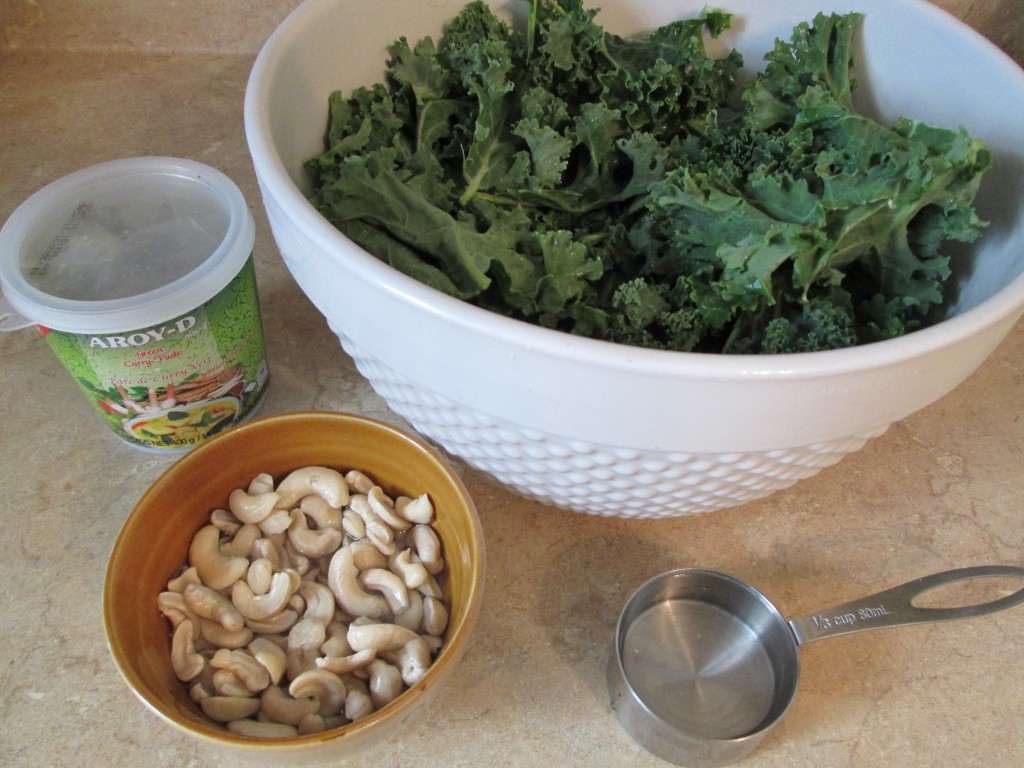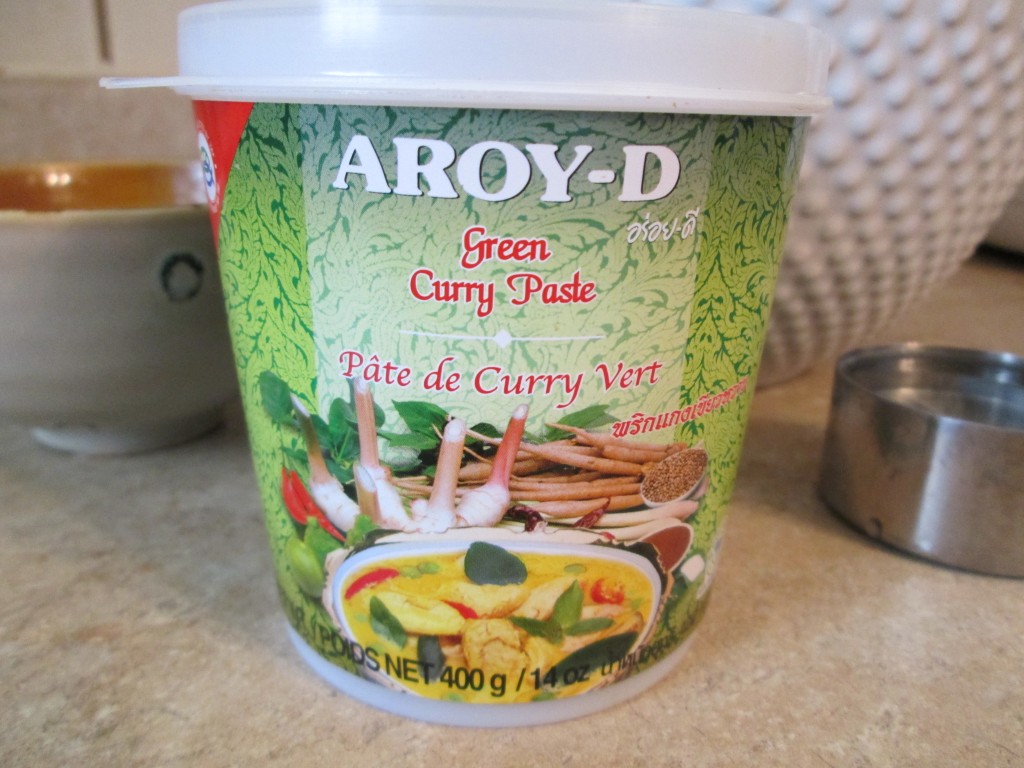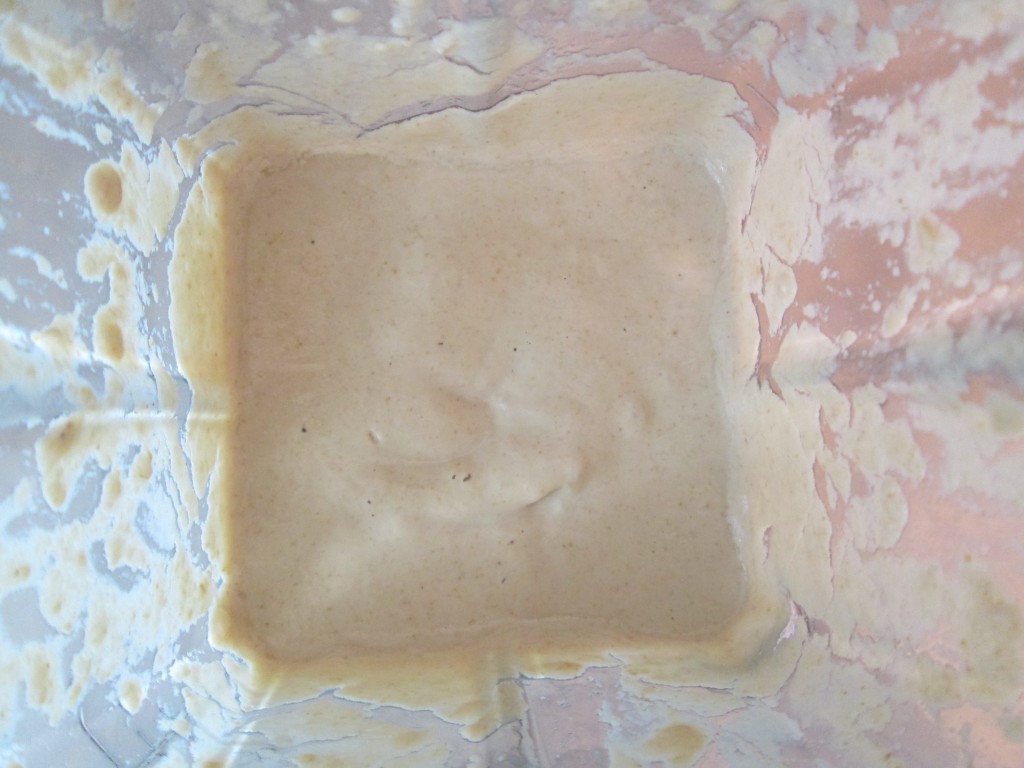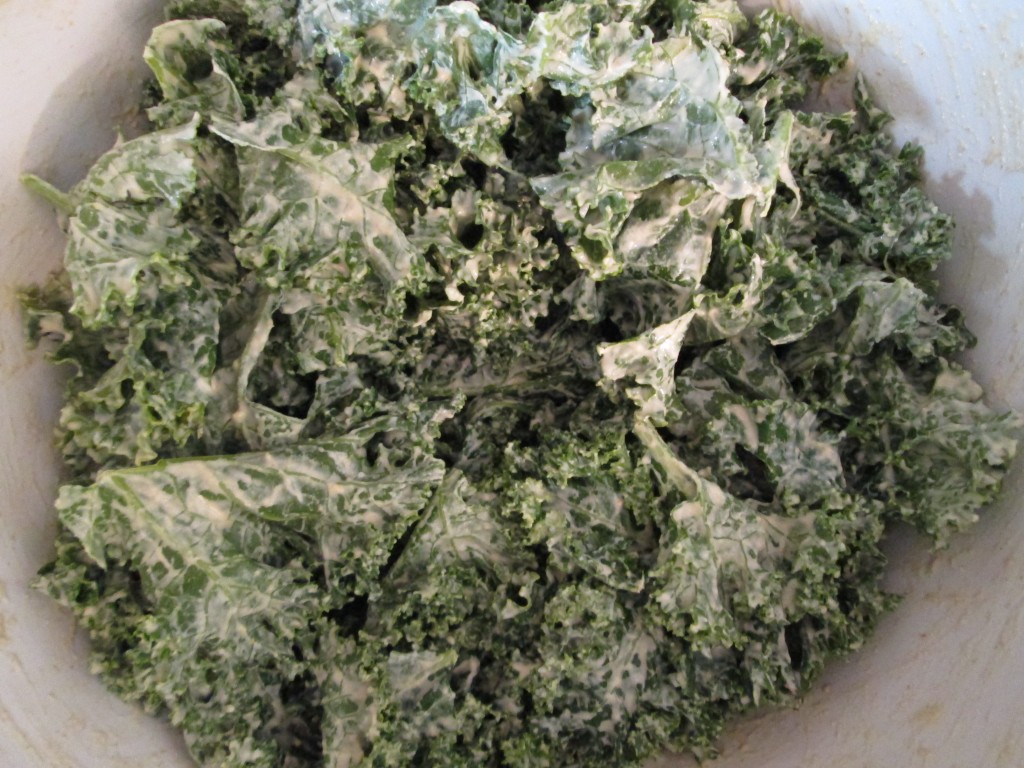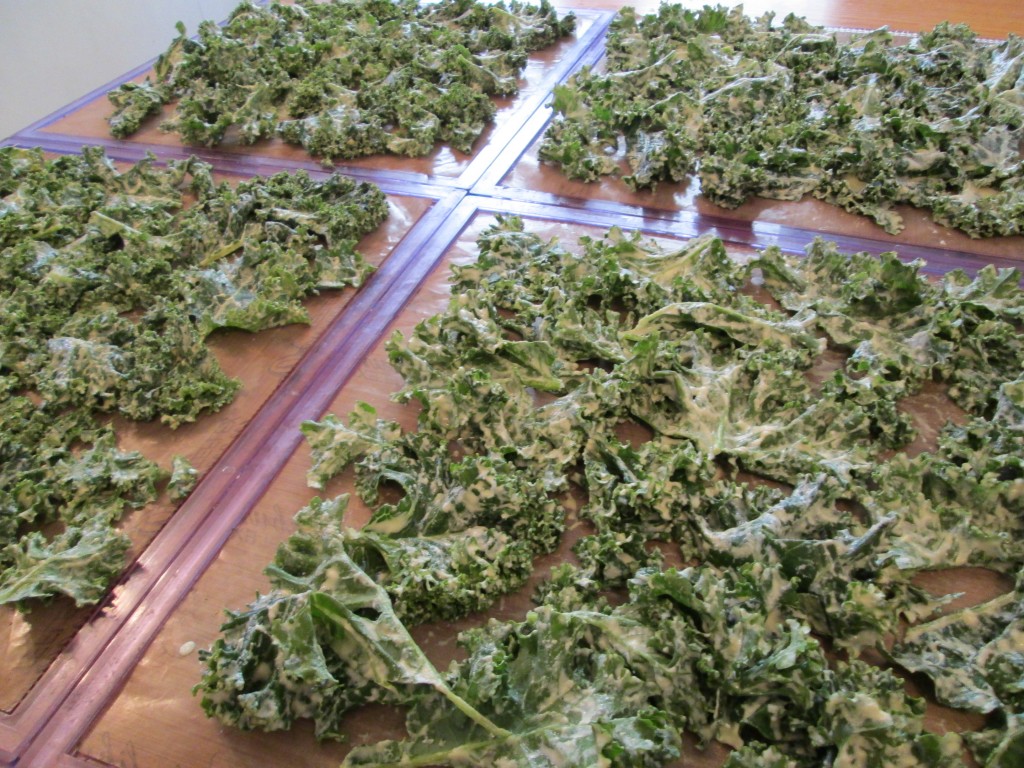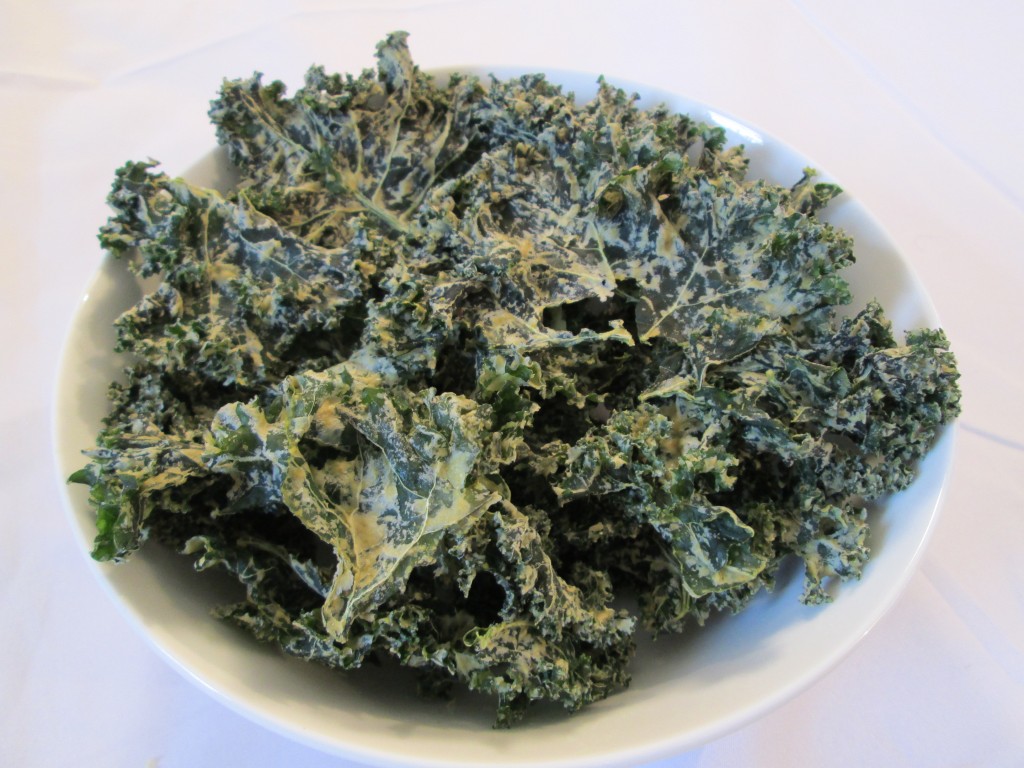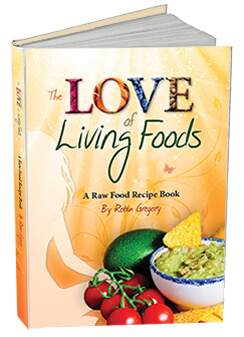Different Types of Curries and Green Curry Kale Chips
2013
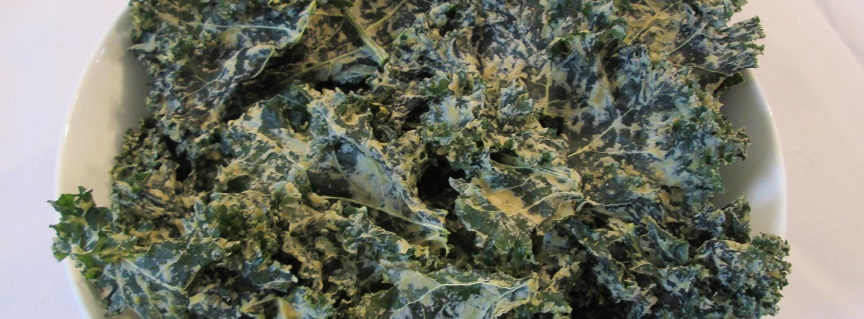
There are many different types of curry found all over the world. This post will explain the mysterious world of curries. Often we think of Indian curry or curry powder when we think of curry, but it is so much more than that. Curries are found worldwide and are very diverse. I will share my favorite curry from Thailand, green curry, which can be prepared by hand or bought in a paste. Also, I will show you my favorite pre-made Thai curry paste and how to make my new favorite snack – Green Curry Kale Chips!
What is Curry?
Curry is a generic English term given to a wide variety of dishes from India to Southeastern Asia, and curry is now included in many world and fusion cuisines from tropical countries worldwide. Curries usually have in common a complex (but not always) combination of spices and herbs that often (but not always) include chilies. Some curries are not even hot, but they are usually very flavorful and they can taste very different in dishes prepared all over the world.
About Curry and a Brief History
Curry was anglicised from the Tamil word ‘kari’, meaning sauce. Different curries originate from different regions and use different spices and ingredients according to what is available and preference. There are a vast number of different types of curries and they have specific names that refer to their ingredients, spicing or cooking methods.
A very loose history would see curries being made in India up to 2000 BC. In the 7th century spiced dishes from India were carried eastward by Buddhist monks to Burma, Thailand and China and then south to Indonesia and the Philippians. The chili pepper was introduced to India in 1510 via a Portuguese trading center in Goa. From the mid 1800’s curry has been increasingly popular in Great Britain and later was carried to the Caribbean by Indian workers in the British sugar industry.
Different types of Curries
Broadly speaking, two of the main types of curry are Indian curries and Thai curries, which are very different from each other. There are also many curries from other Asian and Caribbean countries. Curries are found worldwide, and they are vastly diverse, but India is considered the birthplace of curry.
Indian Curries
Indian curries can be very generally divided into north Indian, which are often milder, and south Indian, which tend to be hotter. However, within the north and south classifications are innumerable sub styles and variations.
Here are listed a few of the many types of Indian curries: achari, balti, bhuna, biryani, bhuna, chasni, dhal, dhansak, doplaza, jaipuri, jalfrezi, karahi, kofta, korma, madras, masala, mussalman, naga, nentara, pasanda, pathia, phaal (extremely hot), rogan josh, tandoori, tikka, vindaloo.
Curry Powder
Curry powder is a commercially prepared mixture of spices. It may have originated when Indian merchants prepared this blend to sell to the British army returning to Britain. Or it may have been developed by the British, as a means of approximating Indian cuisine at home.
Commercial curry powder from Britain, the US and Canada usually have a lot of turmeric in it and are very yellow. It usually also includes coriander, cumin, fenugreek, mustard, chili, black pepper and salt.
Curry powders and pastes found in India are extremely diverse and vary from region to region. They can be red, yellow or brown and have as few as 5 ingredients and often as many as 20, or more. In addition to the spices listed above, Indian curry powder often also has: allspice, ginger, cinnamon, white pepper, roasted cumin, cloves, nutmeg, mace, green and black cardamom seeds and pods, coriander seeds and bay leaves.
Curry can have a pre-blended curry powder in it, but quite often they do not and have instead their own unique combination of spices. Spices used in curries are sometimes left whole and sometimes powdered. They are often prepared in certain ways, fried over a hot heat first or in oil to release certain flavors. The spice preparation is often an intrinsic part of the curry flavor.
Masala refers to a mixture of spices. A masala can either be a combination of dried spices or a paste, made from a blend of spices along with other ingredients such as garlic, ginger, onions, and chilies in a base of ghee, oil or coconut milk.
Personal anecdote about curry spice blends: I love creating my own spice blends and have created awesome masalas with over 20 ingredients in them. I also love Indian foods and at the time my Mom took a stroke, 2 years ago, I was living in an area of Toronto called ‘Gerrard Indian Bazaar‘. I loved it there, especially the festive atmosphere that ran late into the night, the colors, sounds, the party atmosphere with smells of incense, curry and barbecued corn being sold on the street. When I moved away (and it happened overnight) I asked a friend to go to the small local grocery store and pick up a few of the Indian spices and send them to me. I received a box – over $50 worth – of MDH spices, shown above!! These are just a few of the boxes. There must have been 30 to 40 boxes. Indian curry/masala spice blends are much more diverse than our traditional yellow curry powder. These spice blends are delicious but not organic. They are however, great to experiment with so you can recreate with organic spices!
Thai curries
Thai curries often are distinguished by color: red, green and yellow.
Green curry is often the spiciest, followed by red and then yellow. Green curry gets its color from green chilies and basil, red is from red chilies and yellow is from turmeric. There is also panang curry, which is made with peanut butter. Most Thai curries contain galangal root (relative of ginger), garlic, lemongrass, shallots, cumin, coriander, kaffir lime leaves and lime zest. These curries are usually mixed with coconut milk as their base. Thai cuisine also several golden or orange water based curries that do not contain coconut milk and are even spicier.
Health Benefits of Curry
Spices are very healthy and many have abundant medicinal properties. Studies have shown many ingredients in curry to help many different diseases, from various cancers to Alzheimers.
The hotter ingredients in curry can lead to the body’s release of endorphins and provide a natural high.
Curry is claimed to be one of the most powerful aphrodisiacs.
Green Curry (Thai)
The main ingredients in green curry sauce are coconut milk and green curry paste. To this often Thai basil leaves and kaffir lime leaves are added toward the end of cooking. The curry can be made hotter or milder by adding more or less of the green curry paste to the coconut milk.
Green curry pastes are often made by grinding in a mortar: green chilies, garlic, galangal, shallots, lemongrass, kaffir lime peel, cilantro and/or coriander root (but not the leaves), coriander and cumin seeds and white peppercorns.
To make our kale chips we are going to use a pre-made green curry paste.
The ingredients of Aroy-D Green Curry Paste are: Green Chili (30%), Shallot, Lemongrass, Salt, Garlic, Galangal, Kaffir Lime Peel, Cumin powder, Coriander seed, Turmeric.
This is so easy. It’s almost unfair to be this easy as the taste is incredible. Spicy, flavorful and so delicious ..and this is how it’s done.
Green Curry Kale Chips
Ingredients
1 bunch Kale
½ cup Cashews
2 Tbsp Green Curry Paste
1/3 cup Water
note: 2 Tbsp of curry paste makes them quite hot (spicy). To lessen the spice and heat, lower the amount.
Directions
Wash kale leaves, destem and then tear any very large pieces into smaller pieces, according to the size you like them. I still like mine to be quite large, for instance I often tear a large kale leaf into 4 pieces. Drain and pat dry kale leaves if very wet and place in a bowl.
Drain the cashews and then add these with the water and green curry paste to a blender and blend until creamy and smooth. Pour the blended mixture over the kale leaves and mix well. I like to get my hands in and massage the mixture well into the leaves, but you can use a spoon or other utensil if you prefer.
Lay kale out on teflex sheets and dehydrate until dry and crispy. Flip kale chips over onto a mesh screen half way through dehydrating. They can take up to 24 hours to get very dry and crispy.
Timing strategies
I often plan to make mine mid-late afternoon and dehydrate and then flip them over onto the mesh screen before bed. Then they are usually ready in the morning. I think they are great for breakfast.
If you work away from home in the daytime, try mixing them and dehydrating right before bed. Then flipping them onto mesh screen in the morning. After work they will be done.
Photo Description
Assemble ingredients
Close up of the green curry paste. It also comes in a small can, as well as in red and yellow varieties as well.
Blend together cashews, water and curry paste.
Massage this mixture well into the kale leaves, coating them thoroughly.
Spread out onto teflex sheets and dehydrate.
When dry and crispy transfer to a bowl, or air tight container if you want to save some. Although, I find they never last long around here, so I never even try that anymore.
I hope you enjoy these as much as I do. They are now my new favorite flavor!
